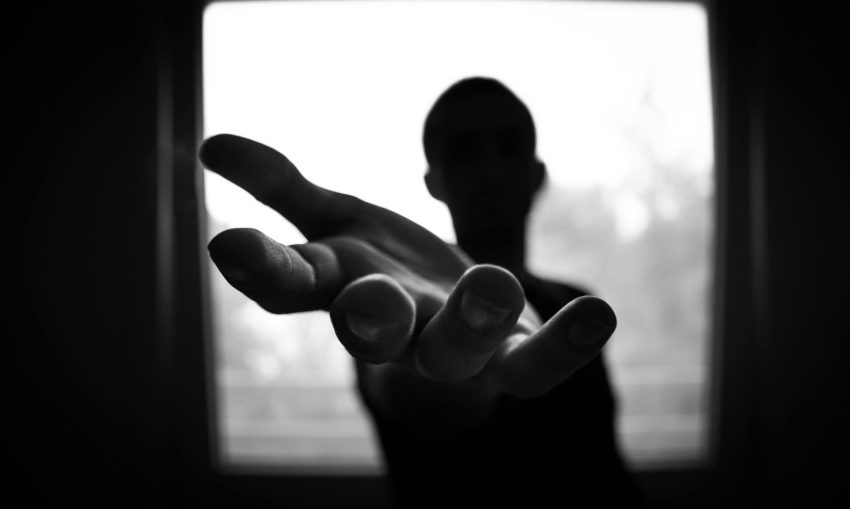In an age where information flows freely, one chilling reality persists beneath the surface: the prevalence of Human Trafficking remains alarmingly unnoticed in our communities. This insidious crime affects countless lives, yet the grim statistics often fail to convey the true depth of its impact. As we delve into the hidden faces behind this crisis, we will uncover the stories of victims who suffer in silence. Moreover, we will examine the alarming reasons why this issue remains underreported, raising crucial questions about our collective responsibility to break the silence and bring these horrors to light. Join us as we shed light on a nightmare that demands our attention and action.
Understanding the Scope of Human Trafficking in Our Communities
Human trafficking represents a complex and often hidden crisis that affects communities around the world. While many individuals may perceive this issue as a distant concern, the reality is that it permeates local neighborhoods and cities, presenting an urgent societal challenge. Understanding the magnitude of this human rights violation is crucial for effective advocacy and intervention strategies.
Statistics indicate that millions of people are currently victims of human trafficking, with both domestic and international networks exploiting individuals for various purposes, including forced labor and sexual exploitation. According to the Polaris Project, which operates the National Human Trafficking Hotline, thousands of cases are reported annually, yet the numbers likely reflect only a fraction of the actual instances due to the clandestine nature of the crime.
Furthermore, human trafficking does not discriminate by age, gender, or socioeconomic status. Vulnerable populations—such as children in foster care, immigrants, and those living in poverty—are often targeted by traffickers. Local communities must recognize these signs to combat trafficking effectively. For instance, unexpected changes in behavior, signs of physical abuse, or a lack of access to basic needs can signal that an individual may be involved in trafficking.
Community engagement plays a pivotal role in combating this issue. Initiatives such as educational workshops, awareness campaigns, and collaborations with law enforcement can shed light on the problem. Support from local organizations and dedicated citizens can lead to increased vigilance, helping to identify and protect potential victims. By understanding the scope of human trafficking in our communities, we can raise awareness, advocate for prevention programs, and ultimately work toward creating a safer environment for all.

The Hidden Victims: Faces Behind Human Trafficking
The issue of Human Trafficking is often depicted through statistics and impersonal reports, but at its core, it involves real people – the hidden victims whose lives are irrevocably altered. These individuals come from diverse backgrounds, making it crucial to understand that anyone can fall prey to traffickers. Often, they are young, vulnerable individuals seeking better opportunities or simply trying to escape dire situations.
Victim Profiles: Victims of Human Trafficking include children, teenagers, and adults, with women and girls disproportionately affected, particularly in sex trafficking. However, young boys and adult men are also targeted, especially within environments prone to labor exploitation like agriculture, construction, and domestic work. Traffickers often exploit existing vulnerabilities, such as poverty, homelessness, lack of education, or history of abuse, placing these individuals at high risk of being deceived or coerced.
Barriers to Recognition: Many victims are unaware that they are being trafficked. They may perceive their situation as consensual employment or may be manipulated into thinking their trafficker is their protector. Fear of law enforcement or deportation, especially within immigrant communities, often prevents victims from seeking help. Factors like language barriers, isolation, and misinformation compound their plight, as they struggle to voice their experiences.
Impact and Recovery: The psychological and emotional scars left by Human Trafficking can be profound. Victims often endure trauma, depression, and post-traumatic stress disorder (PTSD), hindering their path to recovery. Support services are crucial in providing trauma-informed care, legal assistance, and rehabilitation programs to help restore a sense of agency and belonging.
Recognizing and understanding the hidden faces of Human Trafficking is vital. Communities can take actionable steps by raising awareness, supporting local organizations that aid victims, and advocating for systemic change to protect those at risk. By shedding light on these hidden victims, we can foster a safer environment that prioritizes the dignity and rights of all individuals.
Breaking the Silence: Why Human Trafficking Remains Underreported
Human trafficking is a significant issue affecting countless lives worldwide, yet it often remains shrouded in silence and misunderstanding. The underreporting of this heinous crime can be attributed to a variety of complex factors. First and foremost, many victims do not recognize that they are being trafficked. They may believe they are engaged in consensual work or have been misled into thinking they are entering a legitimate job opportunity. This lack of awareness makes it difficult for authorities to identify and assist those in need.
Moreover, fear plays a pivotal role in this silence. Victims may fear retaliation from traffickers or law enforcement, especially if they are from marginalized communities or lack legal status. The stigma surrounding the circumstances leading to their exploitation further discourages individuals from coming forward. Many fear being blamed or ostracized, enhancing their sense of isolation and helplessness.
Additionally, there are systemic issues at play. Law enforcement agencies may lack the training required to recognize signs of trafficking, leading to under-reporting. A scarcity of resources to support victims compounds the problem, as existing systems struggle to meet the needs of those seeking help. Furthermore, pervasive societal ignorance and misconceptions about human trafficking contribute to the stigma, complicating efforts to educate communities and encourage open discussions.
Organizations dedicated to combatting human trafficking face significant challenges in raising awareness. These challenges hinder their ability to create a robust support framework for victims. Cultivating an informed society that can recognize the red flags associated with trafficking is crucial. By breaking this silence and addressing the underlying issues, we can foster a safer environment for vulnerable individuals, ultimately leading to an increase in reports and a decrease in this troubling crime.
Frequently Asked Questions
What are the main causes of human trafficking?
Human trafficking is driven by a complex interplay of factors that include poverty, lack of education, political instability, and cultural norms. Poverty often forces individuals into vulnerable situations where they can be easily preyed upon by traffickers. Additionally, in regions where education is lacking, individuals, especially women and children, may not be aware of their rights or the risks associated with trafficking. Political instability and conflict can exacerbate these issues, leading to displacement and increased vulnerability. Furthermore, societal attitudes that devalue human rights and prioritize profit can create environments where trafficking thrives.
How can individuals help combat human trafficking?
Individuals can play a crucial role in combating human trafficking by raising awareness and educating themselves and others about the issue. This could include sharing information on social media and participating in community outreach programs that combat trafficking. Supporting organizations dedicated to fighting human trafficking through donations or volunteering can also make a significant impact. Additionally, individuals should remain vigilant and report suspicious activities to local authorities, as community awareness can help law enforcement identify and address trafficking efforts more effectively.
What signs indicate someone may be a victim of human trafficking?
Recognizing the signs of human trafficking is essential for intervention and support. Some common indicators include a person appearing fearful, anxious, or submissive; lacking control over their movements; being accompanied by someone who seems overly controlling or abusive; showing signs of physical abuse or malnourishment; and having no identification or personal belongings. Victims may also exhibit signs of exploitation, such as working in hazardous conditions without pay, being involved in illegal activities against their will, or having discrepancies in their story about how they came to be in their current situation.
